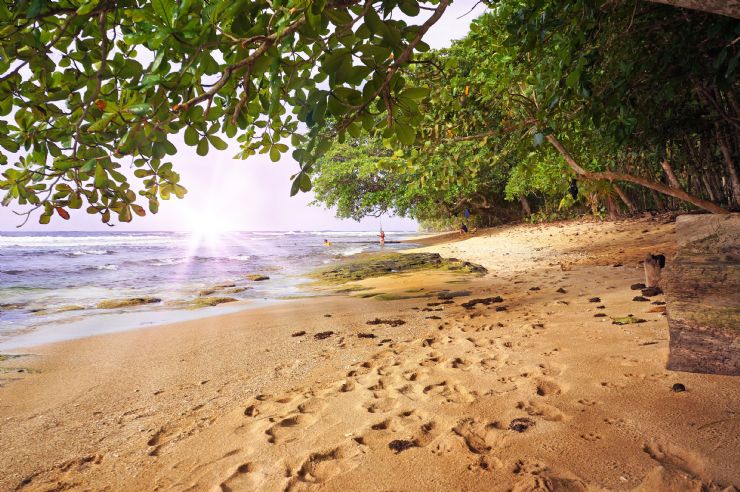
Under a wild almond tree at Manzanillo beach on the Caribbean of Costa Rica
There isn’t really a place in Costa Rica that I don’t love, but each place fascinates me for different reasons. The Caribbean province of Limón is a place that I love because it offers so much. Limón borders Nicaragua and Panama, and calls out to travelers with its exotic side as well as with its peaceful side. The 125 miles of shoreline stretch out along the Caribbean coast and are home to white sand beaches that look like every perfect tropical paradise you’ve ever imagined.
This Caribbean area is so diverse that a traveler can find wetlands and mountains all in one area. Even with all this to offer, Limon province remains the road less traveled in Costa Rica. This just makes Caribbean Costa Rica even more interesting. This area was once land that was isolated, and the Caribbean province may have never been explored if it wasn’t for bananas. Once a seaport was created at Puerto Limón in 1867 to export bananas, the land saw more life. The banana plantations still exist today and cover most of the plains of Limón. There are also rainforests that are so thick that you don’t want to venture too far into them. The Caribbean beaches, of course, offer white sands and clear waters. The mountain ranges tower above. All in all, this coast is filled with pure beauty and wild nature.
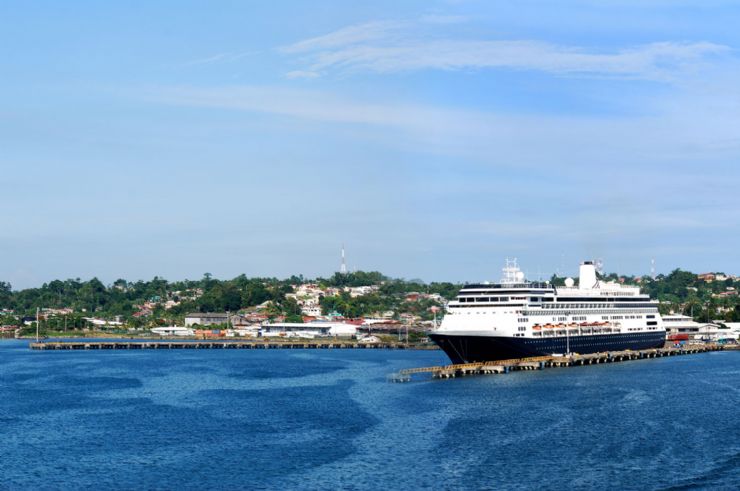
Cruise ship docked in Puerto Limon
7 Days / 6 Nights
Starting at $779 per person
The climate in this region is basically all about the rainfall averages. With the highest rainfall in the country, Limón province is also the most ecologically diverse area. There are several parks throughout the northeast area of the region that have limited access due to swamp-lands. The heavy rainfall is a result of the Caribbean trade winds, and it is what helps the region’s diverse flora and fauna flourish. During the province’s rainy season, the rain and humidity can stay for days. This season occurs each year from April through December. For the rest of the year, there is little to no rainfall, and ample sunshine. The Caribbean province of Limon offers an endless landscape; there are nature reserves, relaxing beaches, and an amazing and genuine Afro-Caribbean cultures. Whether you are seeking adventure, pampering, or an infusion of culture, this province has something for you.
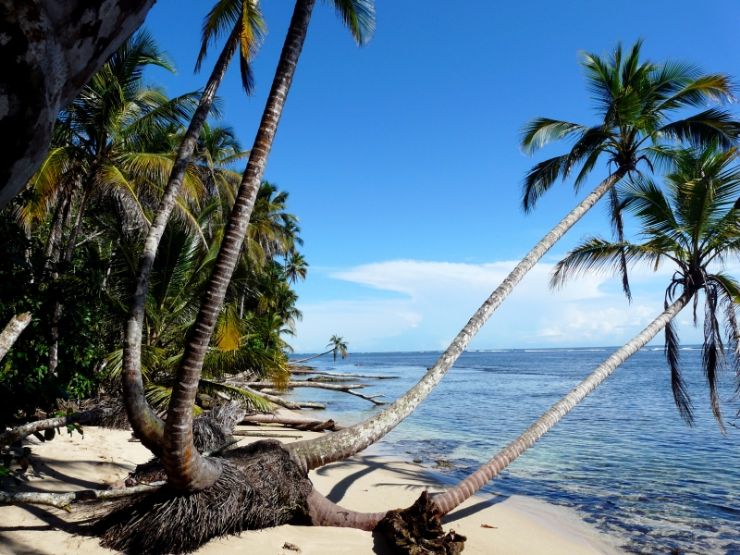
Palms over the ocean on Cahuita beach
Nature Reserves
The Caribbean side of Costa Rica is home to several nature reserves, including Cahuita National Park. This park is exceptional, with about 55,000 acres of protected waters that are home to a living coral reef that is about 600 acres; the water is really the highlight of this park. The park lies in the town of Cahuita, and runs along the town’s southern edge. Cahuita is a nature-lover’s paradise, since here you can see wildlife in the water ranging from coral to fish. You can find 35 species of coral here, and over 400 species of fish. The park was actually originally created in the 70´s so that the coral reef could be protected. While the weather here is mostly great – hot and humid – travelers need to use caution during rainy seasons, when the land can get muddy and be dangerous to traverse. For this reason, it is best to visit this Caribbean park during the drier months – either in March or April, or in September or October. Visiting this Caribbean town, tourists will find that they have plenty of options for activities. Those activities are mostly water based, and include basic swimming, explorative scuba diving, fascinating snorkeling, and challenging canoeing. While in the water, keep an eye out for some of the aquatic life, including eels, sea urchins, lobsters, manta rays, sharks and turtles.
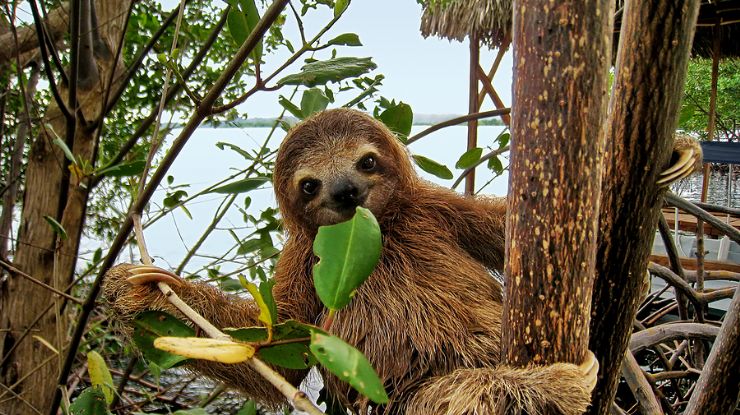
Baby sloth eating mangrove leaf, Limón
The amazing waters of this park are home to an even more amazing coral reef. Though the reef is protected from man-made destruction, there is nothing that can protect it from nature. In the early 1990´s, there was an earthquake that left the coral reef severely damaged. Despite this, the reef is still alive and thriving today, featuring all kinds of species from brain to elkhorn. Tourists that have an interest in shipwrecks will be delighted to hear that there is an 18th century shipwreck located on the River Perezoso. When you aren’t in the water, you can be in the forest where you’ll see all kinds of animals, from snakes and iguanas to monkeys and sloths.
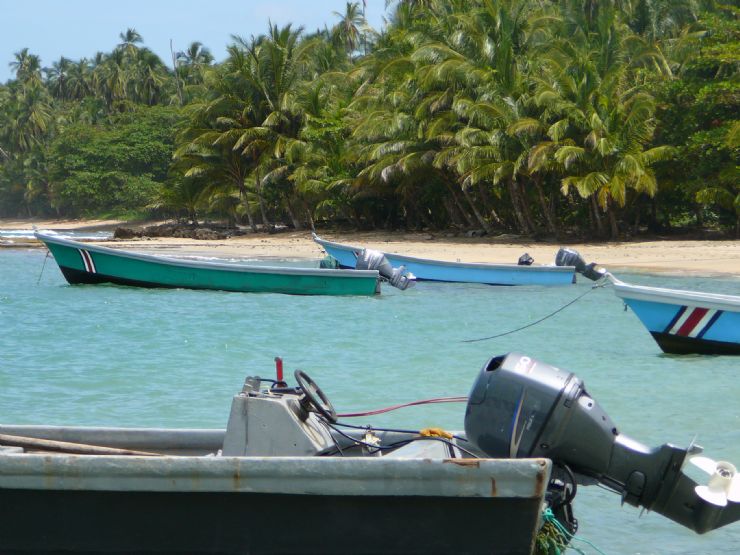
Fishing boats in the Puerto Viejo natural harbor
Relaxing Beaches
The Caribbean side of Costa Rica is also well known for its relaxing beaches. One of the most famous beach areas in the Caribbean region is Puerto Viejo, which is known for being an awesome surfing spot. Though a small coastal town, Puerto Viejo is always bustling, since it is popular with tourists that are trying to escape the popular areas, as well as with suffers. One of the best parts about Caribbean Costa Rica is the culture, and this area doesn’t disappoint. Here, you’ll find a mix of Tico and Afro-Caribbean culture that will keep you dancing and have you learning all kinds of new things. There are plenty of places to spend your nights, as well. Once you pry yourself out of the water and off the beach, you can head to one of the many bars in the area to party for the night. The charm is not only in the local people, but also in the young crowds that come here from all over the world. The relaxing feeling of the beach carries over to the nightlife, with a young, energetic, but ultimately laid back crowd.
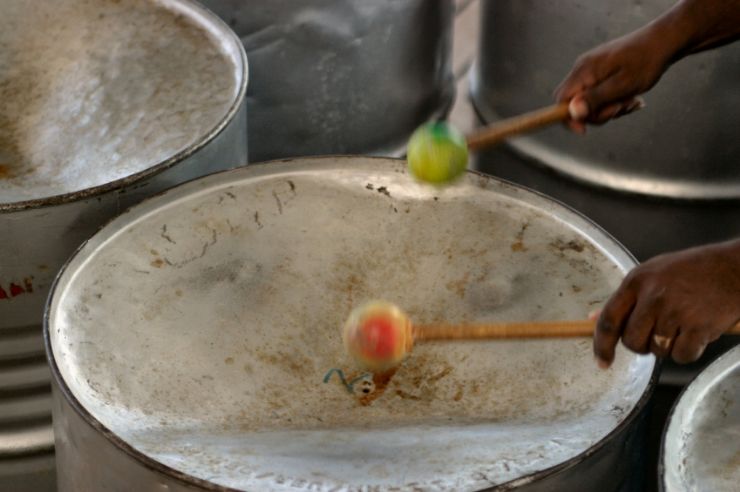
Afro Caribbean Steel Drums in Limon
Cultural Infusion
That cultural infusion is a big part of the Caribbean side of Costa Rica. This area has such a distinct multiculturalism that you can’t find anywhere else – and that alone makes it worth visiting. This cultural infusion is present all up and down the Caribbean coast, and it is one of the things that keeps repeat visitors coming back. The culture here is part Tico, part Jamaican, and part indigenous Bribrí and Cabecar people. This unique blend of people make for a culture that is fun, vibrant, and quick to get onto the dance floor.

